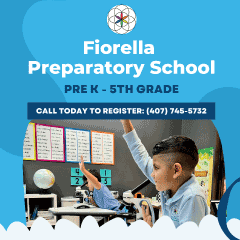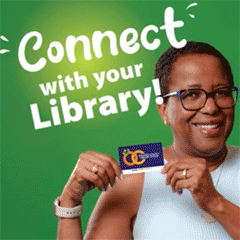Leaders in Higher Education Roundtable
 The landscape of higher education has changed since the last generation set foot on campus. Advancements in technology, a debt crisis and a global pandemic are just a few of the factors making an impact on how students choose to pursue a degree. Orlando Family Magazine approached the leaders of various local institutions to find out how they are adapting to challenges, broadening their educational offerings and better preparing the workforce of tomorrow. What they shared shows that Central Florida’s colleges and universities continue to put students’ needs first, further proving their merit in the higher education arena.
The landscape of higher education has changed since the last generation set foot on campus. Advancements in technology, a debt crisis and a global pandemic are just a few of the factors making an impact on how students choose to pursue a degree. Orlando Family Magazine approached the leaders of various local institutions to find out how they are adapting to challenges, broadening their educational offerings and better preparing the workforce of tomorrow. What they shared shows that Central Florida’s colleges and universities continue to put students’ needs first, further proving their merit in the higher education arena.
What is the biggest challenge facing your institution that is non-COVID related?
Grant Cornwell, Ph.D., president, Rollins College: Like many other institutions, we have taken a hard look at the racial legacies of the college’s history. We have developed pervasive and intentional initiatives to engage Rollins in the racial justice movement underway in our nation, and these efforts must be embedded in all we do. There is also a sense of urgency to amplify efforts at diversity and inclusion across the campus and on a national and global scale.
George J. Hagerty, Ed.D., president, Beacon College: Beacon’s distinct undergraduate mission is to provide a superior liberal arts education to collegians with learning and attention issues. This is a profile of college-ready students who are diagnosed with learning disabilities, ADHD and autistic spectrum disorder. This is a population that remains unserved and underserved by American higher education. Even in the midst of the pandemic, Beacon has continued to grow its residential enrollment, requiring the continued expansion of on-campus academic, housing and service facilities and spaces. In the midst of demographic shifts, the College is confronting the challenge of ensuring the highest caliber of specialized undergraduate preparation for an expanding and diverse student body.
Dwayne McCay, Ph.D., president, Florida Institute of Technology: We’re an international university. However, we’ve seen a significant decline in international students. Over a three-year period we’ve gone from 30% of our incoming new students being international to 10%. It’s not necessarily the pandemic, but more the government’s attitude toward international students and international business. There is a national tendency to not be so supportive of them coming to the U.S. A mentor once told me, ‘If you get into a leadership role, remember that great minds are all over the world.’ The best way to take advantage of other minds is to create an international faculty and student body. We have incredibly bright students from all over and they have raised the quality of the classroom and the university.
What lasting impacts or changes will the pandemic have on your school?
Cornwell: For Rollins, the pandemic has only reinforced the value of in-person learning, community engagement and social relationships. Even as we continue to adapt to the changing demands of the pandemic, we know that students benefit from living and learning in a small, residential community; therefore, we employ flexibility and creativity to find ways to provide the personalized learning environments that drive students’ unique experiences at Rollins. No matter the mode of delivery, Rollins’ mission remains the same: to educate our students to be global citizens and responsible leaders, with meaningful lives and careers.
Hagerty: Certainly, the pandemic will have a lasting influence, among others, on the College in two fundamental ways: 1) a positive orientation toward the responsibility of the individual to the well-being and safety of the larger community, and 2) a strategic imperative that the campus remains ever vigilant, nimble and even unconventional in confronting issues that present us with a limited horizon.
McCay: The pandemic was expected to have a crushing impact on nearly all private schools in Florida, and we prepared for the worst but got something better than that. We actually had growth in new enrollment and the quality of students was just as high as every other year with an average 3.9 GPA for incoming freshmen. From that perspective, the pandemic didn’t change us, but operationally it has been a nightmare. There are protocols to follow: mask wearing, handwashing, we rearranged classrooms for proper distancing and curtailed most athletic events. But, the students were extremely cooperative and the faculty was flexible to hybrid or remote learning. College life has changed enormously and this year we hoped for more normalcy but the Delta variant has made it difficult.
What steps is your school taking to confront declining enrollment and/or the student debt crisis?
Kathleen Plinske, Ed.D., president, Valencia College: We’re working to be more direct in our communications with students and families about the cost of tuition at Valencia. With the amount of media attention paid to the student debt crisis, many families in our community think that the cost of college is out of reach and that earning a college degree is synonymous with going into debt. While it is certainly possible to spend hundreds of thousands of dollars to earn a college degree, the tuition cost for an associate degree from Valencia is about $6,500. It’s important to me that our community knows that there is an affordable, high-quality option close to home. Our per-semester cost for tuition and fees is less than the cost of the meal plan at most universities. Furthermore, financial aid and scholarships are widely available; nearly 40% of our students pay nothing out of pocket for tuition and fees.
Hagerty: Beacon College is indeed fortunate, largely given our unique mission, to be experiencing annual growth of at least 5% over the past five years, including the two academic years influenced by the pandemic. The College continues to do everything possible to make specialized undergraduate preparation financially attainable for all students and families that choose a Beacon education. This includes expanding institutional funds to supplement scholarships, grants and loans as well as aggressive fund-raising to increase scholarship assistance available annually.
McCay: We’ve been fairly flat in enrollment for about four to five years, and part of it is lack of space. We’re at capacity but we have new facilities coming online to help with that. We’ve also refocused where and how we recruit, internationally and also in the Northeast we’re recruiting a large number of students.
Student debt is an issue everywhere but the debt from our students is one of the lower ones with regard to independent institutions. We’re cognizant of the fact that, for a huge fraction of our student body, this is the first time anyone in their family has gone to college. Students come here not only because of the quality education but the focus is also getting jobs in their field with a high salary. By the time they are mid-career, our graduates have the highest salary of any group of graduates.
What are the most in-demand majors currently and have any new ones come to the fore in recent years?
Cornwell: Rollins offers an interdisciplinary approach to education, rooted in the tradition of the liberal arts. Some of our most popular majors are in the area of business, including social entrepreneurship and international business; psychology and communication are also popular. Our newest major is social innovation.
Hagerty: As an institution that offers both bachelor of arts and the bachelor of science degrees, at present, our most significant enrollments are in the majors of business, computer information systems, web and digital media, psychology, and a new and rapidly evolving bachelor of science degree in anthrozoology.
Plinske: One of our fastest growing programs is our bachelor of applied science in business and organizational leadership. It’s not only a great option for recent associate degree graduates from Valencia to continue their studies, but it’s also an excellent opportunity for working adults who have some college credits to earn their degree. It can be completed online and has been designed with the working professional in mind.
McCay: Aerospace and mechanical engineering are consistently the leading group of students that enroll in school. Cybersecurity is another gigantic piece and an undergrad cyber degree is in great demand and getting to be a bigger subset of computer science. There is also growth in biomedical engineering and we have a new facility opening in December to accommodate more biomed students and research.
How does your school strive to better serve non-traditional students (who commute, work full-time, care-give, etc.)?
Cornwell: Through our Hamilton Holt School evening program, we offer undergraduate and graduate degree programs to non-traditional students. These students frequently resume their studies to complete degrees that may have been interrupted by a life event or embark on an advanced degree program that will allow them to attain their career goals. Our classes are small, so our faculty can engage with every student; they understand the demands of non-traditional students and work with them to achieve academic success.
Hagerty: It is important to note that, while most of our students represent traditional-age collegians, many undergraduates with learning and attention issues do not enter college until later in their 20s given their secondary school experiences. Beacon welcomes this cohort of students who, although a minority, do benefit from the College’s instructional design and “wrap-around” support offered by learning specialists and counselors.
Plinske: Nearly all of our students are “non-traditional,” with the majority attending Valencia on a part-time basis while balancing work and family responsibilities. We strive to offer a variety of flexible options, both in-person and online, for students to access both our courses and our support services. For example, years ago, our Student Government Association voted to redirect funds that had been spent on athletics toward learning support; as a result, we are able to offer free tutoring to our students, both in-person and online, for every course taught at Valencia.
As higher education institutes face financial struggles, what cost-saving measures may we see them enforce? Perhaps mergers or partnerships will become more common?
Cornwell: Rollins College diversified its revenue model by developing a retail facility, SunTrust Plaza, and later unique luxury hotel, The Alfond Inn. Net operating income from The Alfond Inn is directed to The Alfond Scholars Program, which has given away millions of dollars in full scholarships to Rollins College students. Demand for The Alfond Inn has been so great, an expansion is currently underway.
Hagerty: If you have ever been a witness to the tireless efforts of colleges and their trustees to maintain high quality at the best possible cost, you can appreciate the priority that institutions place in meeting the financial demands of the marketplace. This is daunting work in which colleges engage annually. That said, private and public institutions that are now struggling through significant demographic change may be compelled, for survival’s sake, to explore mergers or the development of joint programs to save their mission. Few have done this well.
How are you helping the state avoid brain drain?
Hagerty: Beacon College draws more than 70% of our students from 32 other states and six foreign countries. As a national institution with an international reach, we are a net importer of students, many of whom choose to reside in Florida after their graduation.
Plinske: The vast majority of Valencia students are residents of Central Florida, and nearly 80% of our students are already in the workforce. We are intentional about building strong relationships with our local employers, ensuring that our graduates are well-prepared to contribute to our regional economy and have the skills required for jobs that are in high demand in Florida. Furthermore, our DirectConnect to UCF partnership, which guarantees students’ admission to UCF upon completion of their associate degree from Valencia, along with our own baccalaureate degree programs, further strengthen local connections as students have the opportunity to complete their bachelor’s degree without leaving their hometown.
McCay: We are Florida’s STEM university and we’re in a perfect location. Over half of our graduates stay in Florida and end up working for companies located nearby. If you searched around the world looking for the best location for an aerospace university, it would be here because of the Kennedy Space Center and SpaceX. We almost can’t take any credit for it, but we’re designed to prevent brain drain naturally. Our graduates want to work and do something rewarding and there are so many opportunities right here for them.
Where will the school be 10 years from now?
Hagerty: It is my expectation and that of the community and Board of Trustees that the College will remain faithful to its historic mission of serving collegians with learning and attention issues, ensuring their success and independence after graduation. In a high-tech world, our undergraduate profile is best suited to a far more “high-touch” approach benefiting from in-person contact and mentoring style. While the College will continue to invest wisely and significantly in the technologies that enhance the learning process, the strength of our classrooms on site will continue to be the focal point of Beacon’s offerings. The College has already begun to broaden its programming to students and families endeavoring to make the difficult transition from high school to colleges with programs such as “Navigator Prep” and “Summer for Success.” We have also been approached nationally and internationally about the possibility of replicating Beacon’s undergraduate model at other locations, but this is currently far from a decision point.
Plinske: Valencia’s Strategic Impact Plan articulates our bold and ambitious goals for the next decade related to college access, completion, transfer and career credential attainment, which will be measured through a lens of equity. For example, we plan to work with our school district partners so that by the year 2030, at least 80% of recent high school graduates of all races and ethnicities will enroll in some form of postsecondary education. This may not necessarily mean pursuing a bachelor’s degree, or even an associate degree, but emphasizes the importance of students participating in some form of education after high school, which we know is critical for our students’ futures.
Similarly, we have a goal to dramatically increase our graduation rates for students of all races and ethnicities. While we currently have differences in our graduation rates between our Black, Caucasian and Hispanic students, Valencia holds tightly to the belief that anyone can learn anything, under the right conditions. The disparities we see in our graduation rates signal to us that we haven’t yet created the conditions necessary for all students to be successful, and we will work over the next decade to ensure that we do.
McCay: Right now we’re working on a six-year plan that has broadened organically over time. We’re investing in biomedical engineering, marine science and aerospace with new facilities. We’re also the first university to own and fly an electric airplane. Research is also a big piece of what we do. Not everything can be done on a computer and we have great work being done in our chemistry and biology labs. … I do see our campus expanding and I expect we go from 5,000 students to 10,000.
What will “college” look like in 10 years?
Cornwell: Rollins has joined colleges and universities in our region to form the Central Florida Higher Education Partnership for Sustainable Development. This new partnership is committed to advancing the 17 Sustainable Development Goals that comprise the 2030 Agenda of the United Nations. It is our shared vision that higher education will lead the way in addressing global issues like climate action, poverty, quality education, gender equality and affordable and clean energy, and more. At Rollins, we are integrating these goals into our campus life and learning because we have an inherent responsibility to be part of the solution.
Hagerty: If the past 10 years proved to be any indication, the influence of technology will continue to drive much of how we think about and approach the delivery of educational programming. Certainly, traditional instructional facilities will remain a core component of college and university life. However, the “teaching and learning spaces and places” will be far more adaptable and individualized. Clearly, the expansion of competency-based badges and micro-courses will be integrated into the overall structure of formal degree programs.
Plinske: I think one of the most important roles of colleges in the future will be to prepare individuals to be lifelong learners. While many of us have a mental model that once we finish a degree program, we’ve “completed” college, I think we will find an accelerating need to continually update and upgrade our skills in the future. As individuals, we should be prepared to engage as learners throughout our lives. As colleges, we will need to develop ways to stay more closely connected with alumni and make it easier for graduates to return for additional learning opportunities.
McCay: There’s no crystal ball but I think most prognosticators would say there will be a significant difference. There is a trend happening in the U.S. to not be so supportive of liberal arts programs. I think liberal arts ought to be ground into all programs, but the degrees themselves are not in vogue with the government and industry. Dozens of liberal arts universities have closed. Older schools like Harvard will survive because of their endowment, but the ones that don’t have that base are going to disappear.











